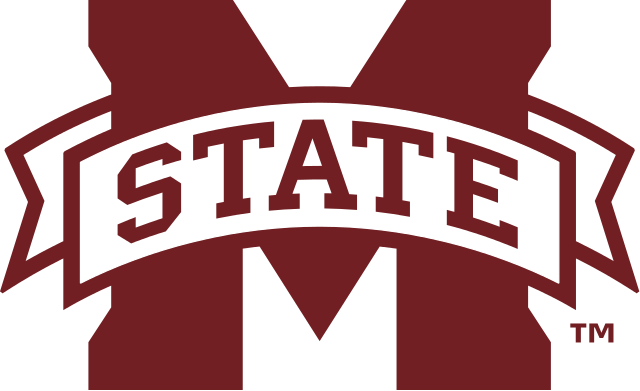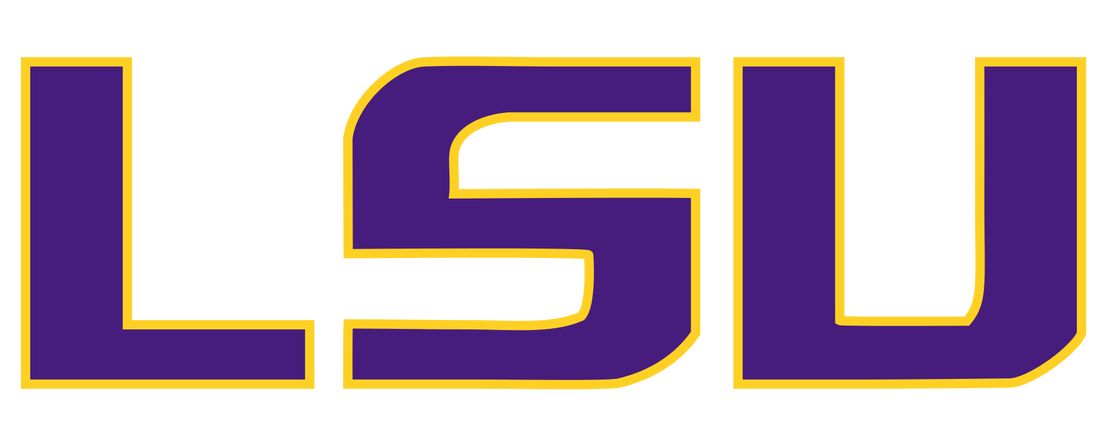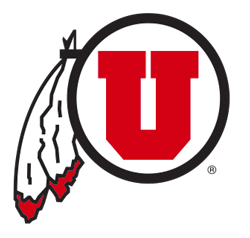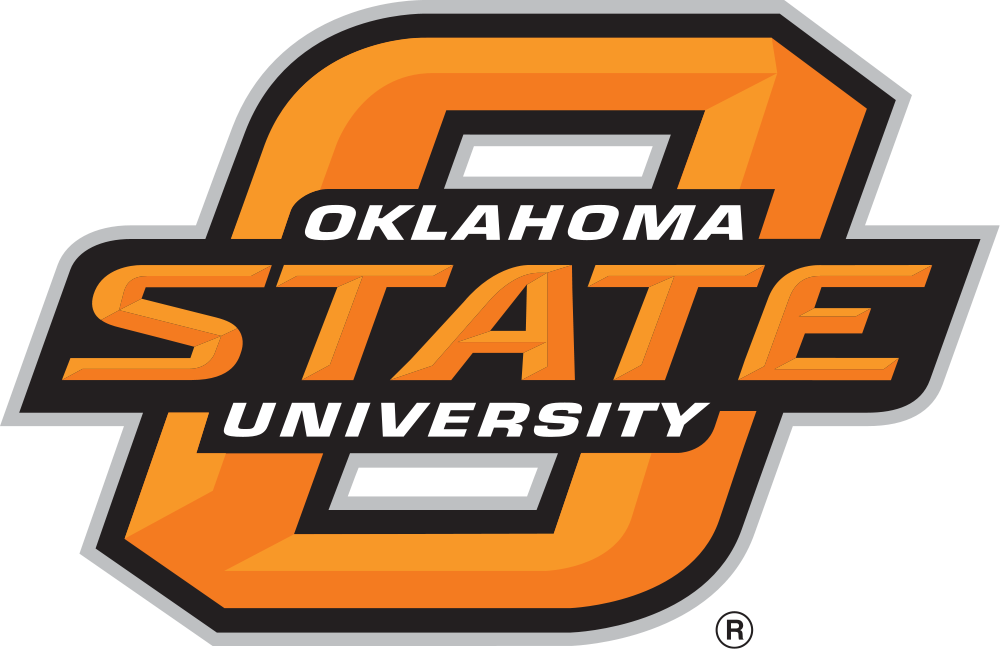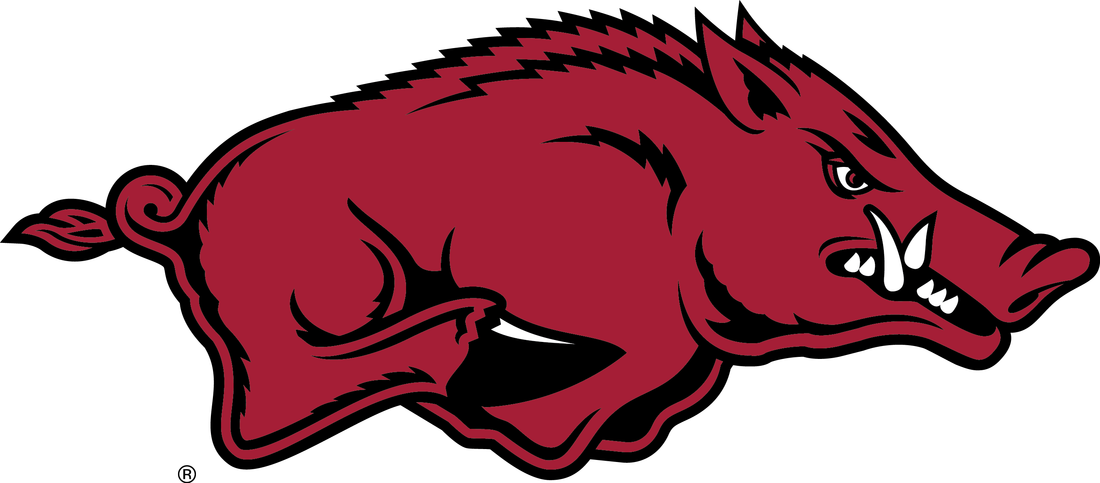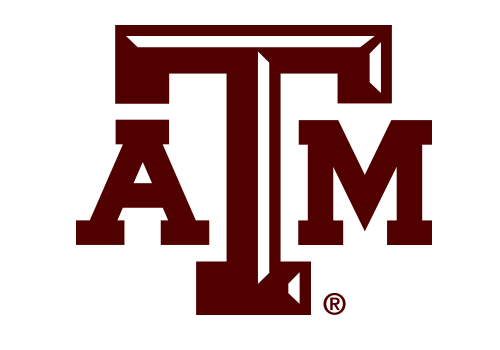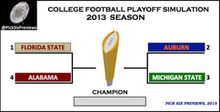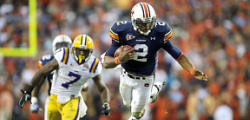The Football Factories
|
Mike Nowoswiat - February 9th, 2016
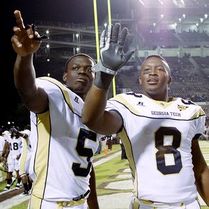 Stephen Hill and Demaryius Thomas
Stephen Hill and Demaryius Thomas
You hear it every year: "I chose [Insert School] because they put players in the NFL." It is one of the go-to recruiting pitches for every coach with NFL experience, and every coach who employs a pro-style offense. For instance, Duke’s David Cutcliffe—QB mentor to the Manning brothers and a pro-style offense aficionado—took jabs at Georgia Tech coach Paul Johnson’s spread option attack: “You’re not seeing what you’re going to see in pro ball, if you think you’re a pro-type of player. If I’m a receiver, why?" Of course, Paul Johnson has been pumping out NFL receivers like no other, so is there any merit to what Cutcliffe is saying? How about the coaches who are negatively recruiting against Oregon's offense? Why is Marcus Mariota already 1,000 times the NFL quarterback that Jimmy Clausen or Brady Quinn ever were? Well, as you'll see, it usually just comes down to the individual player and his athletic abilities, not the scheme he plays in for 3-4 years.
Now here's another fallacy that has always seemed pretty obvious to me and many other people, but you still hear recruits (or fans who just learned about twitter) pointing to the "number of players [Insert School] has put into the NFL." Let's say that school is Alabama (or LSU or Ohio State...), which signs anywhere from 16-20 four or five star recruits per year. Those are the recruits that are rated by Rivals, Scout, and 247 as "future NFL players." So, of course, the teams that sign the most "future NFL players" should (at some point in the future) put the most players into the NFL.
Let's look at it from the perspective of a single four or five star high school football recruit. If you are that player, you want to know which school will give you the best chance of making it to the next level. Well, we went back and looked at all of the former four and five star recruits (the "future NFL players") that signed with each active coach and the percentage of those players that were drafted. Because what good is 20 draft picks when there were 500 former four stars that never made it? But 20 draft picks out of 30 former four stars? Now we are talking.
Since most people would admit that it is the coaching staff, not the facilities or academics, that develops its players, we looked at the recruits signed by each coach, not each school. So that means Miami's ability to develop prospects is completely dependent on Mark Richt's ability to develop prospects. Therefore, Miami's data comes from Richt's years at Georgia. And since it would get messy otherwise, we only looked at a head coach's track record since he is ultimately responsible for player development. While Virginia Tech should continue to be a pipeline for defensive backs into the NFL with the retainment of DB coach Torrian Gray and DC Bud Foster, we excluded Virginia Tech because of head coach Justin Fuente's inexperience.
Now here's another fallacy that has always seemed pretty obvious to me and many other people, but you still hear recruits (or fans who just learned about twitter) pointing to the "number of players [Insert School] has put into the NFL." Let's say that school is Alabama (or LSU or Ohio State...), which signs anywhere from 16-20 four or five star recruits per year. Those are the recruits that are rated by Rivals, Scout, and 247 as "future NFL players." So, of course, the teams that sign the most "future NFL players" should (at some point in the future) put the most players into the NFL.
Let's look at it from the perspective of a single four or five star high school football recruit. If you are that player, you want to know which school will give you the best chance of making it to the next level. Well, we went back and looked at all of the former four and five star recruits (the "future NFL players") that signed with each active coach and the percentage of those players that were drafted. Because what good is 20 draft picks when there were 500 former four stars that never made it? But 20 draft picks out of 30 former four stars? Now we are talking.
Since most people would admit that it is the coaching staff, not the facilities or academics, that develops its players, we looked at the recruits signed by each coach, not each school. So that means Miami's ability to develop prospects is completely dependent on Mark Richt's ability to develop prospects. Therefore, Miami's data comes from Richt's years at Georgia. And since it would get messy otherwise, we only looked at a head coach's track record since he is ultimately responsible for player development. While Virginia Tech should continue to be a pipeline for defensive backs into the NFL with the retainment of DB coach Torrian Gray and DC Bud Foster, we excluded Virginia Tech because of head coach Justin Fuente's inexperience.
criteria
- Recruiting years 2002-2011
- 247sports composite ratings
- The player must have played under the coach for at least two (2) years.
- If he transferred out at any time it counts as a "miss," unless he returned.
- JUCO transfers into a program were included. College transfers into a program were not included.
- Undrafted free agents are not draft picks.
Results
Small sample sizes (5 or fewer)
What does it mean?
You might be looking at this information and wondering what to really take from it. If you are a Tennessee fan you might have already tweeted at us about Derek Barnett and Jalen Hurd's bright futures. However, the erratic results per school, coaching staff, scheme, and conference ultimately prove my original point: they don't have a significant impact on an individual recruit's likelihood of going pro. The player's athletic ability, mental makeup, etc. are the the most significant determining factors. If you are good enough to go to the NFL, they will find you.
However, the difference between the top teams and the bottom teams on this list is significant and cannot be ignored. It is important to remember that the basis for this data comes from the recruiting services--and with over one million high school football players in the United States, projecting future prospects is hardly an exact science. UCLA, Clemson, and the other top "developers" have certainly proven to NOT squander talent. But since the NFL places such a high premium on innate physical ability (i.e. not coachable), the results are even more revealing about these coach's ability to evaluate and recruit the best talent.
However, the difference between the top teams and the bottom teams on this list is significant and cannot be ignored. It is important to remember that the basis for this data comes from the recruiting services--and with over one million high school football players in the United States, projecting future prospects is hardly an exact science. UCLA, Clemson, and the other top "developers" have certainly proven to NOT squander talent. But since the NFL places such a high premium on innate physical ability (i.e. not coachable), the results are even more revealing about these coach's ability to evaluate and recruit the best talent.
you may also like...
what if there was a playoff during the bcs era?
|
After decades of dreaming about it, years demanding it, and months arguing about it, the Playoff Era is finally here. The old BCS system would have produced a National Championship Game of #1 Florida State (only undefeated) and #2 Alabama (SEC Champion), but with both of those squads losing in the National Semifinals, the new system is instantly validated. Continue reading...
|
Video Vault: Heisman Moments
|
Every college football season is packed with highlights, memorable plays, and last-second victories. But every once in a while a superstar player leaves his mark on the game, and clinches the sport's most prestigious honor in a single play. These are the plays that you remember exactly where you were when watching live, the plays that your father and grandfather still discuss, the plays you will be talking about for decades ... these are the HEISMAN MOMENTS
Continue Reading... |













